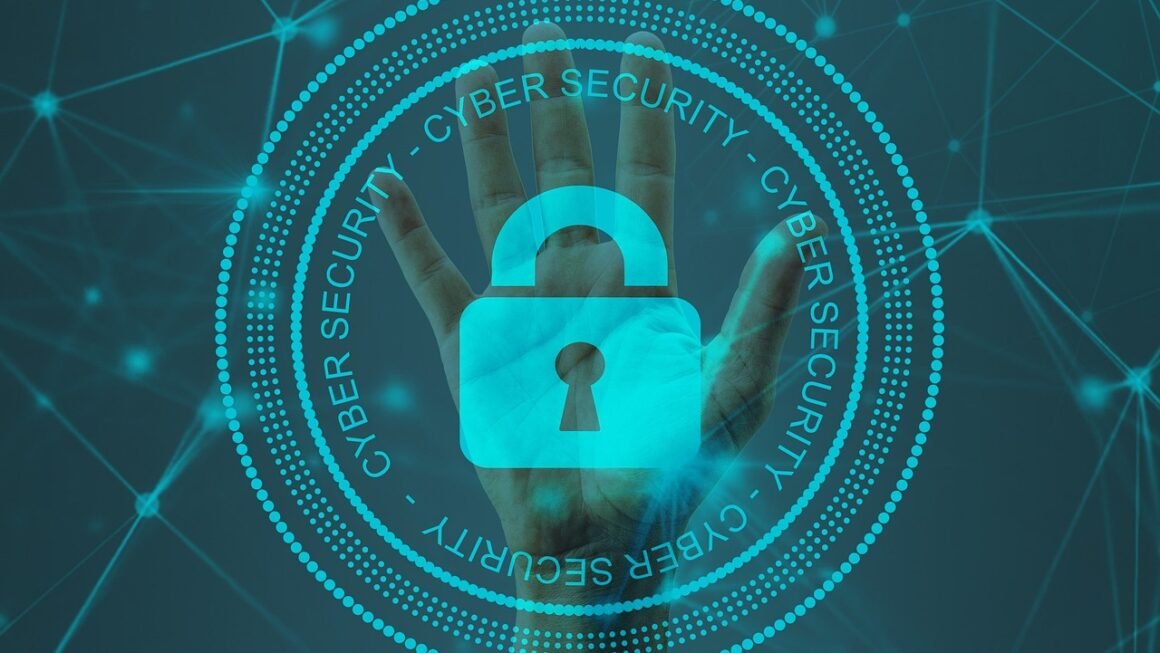In today’s interconnected world, the threat of cyberattacks looms large for individuals, businesses, and governments alike. Understanding the landscape of cyber threats, implementing robust security measures, and staying informed about emerging risks are crucial for safeguarding your digital assets and maintaining a secure online presence. This blog post delves into the various types of cyber threats, explores preventative strategies, and offers actionable insights to help you navigate the complex realm of cybersecurity.
Understanding the Cyber Threat Landscape
What are Cyber Threats?
Cyber threats encompass any malicious activity that aims to damage, disrupt, or gain unauthorized access to computer systems, networks, and digital devices. These threats can originate from various sources, including individual hackers, organized crime groups, and even state-sponsored actors. The motivations behind cyberattacks vary widely, ranging from financial gain and espionage to political activism and simple vandalism.
The Growing Cost of Cybercrime
The impact of cybercrime is significant, with global losses reaching trillions of dollars annually. According to a report by Cybersecurity Ventures, global cybercrime costs are projected to reach $10.5 trillion annually by 2025. This underscores the importance of investing in robust cybersecurity measures to mitigate potential risks.
- Financial losses from data breaches
- Reputational damage and loss of customer trust
- Disruption of business operations and productivity
- Legal and regulatory penalties
Common Types of Cyber Threats
Malware
Malware, short for malicious software, is a broad category of threats designed to infiltrate and harm computer systems.
- Viruses: These self-replicating programs attach themselves to other files and spread throughout a system, causing damage or stealing data.
Example: A user downloads a file from an untrusted source, unknowingly infecting their computer with a virus that corrupts system files.
- Worms: Similar to viruses, worms can self-replicate but do not require a host file. They can spread rapidly across networks, consuming bandwidth and disrupting operations.
Example: The infamous WannaCry ransomware attack, which exploited a vulnerability in Windows to spread rapidly across global networks, encrypting files and demanding ransom.
- Trojans: These malicious programs disguise themselves as legitimate software to trick users into installing them. Once installed, they can perform a variety of harmful actions, such as stealing data, installing backdoors, or launching denial-of-service attacks.
Example: A user downloads what appears to be a legitimate PDF reader, but it secretly installs a Trojan that logs keystrokes and steals passwords.
- Ransomware: This type of malware encrypts a victim’s files and demands a ransom payment in exchange for the decryption key.
Example: The CryptoLocker ransomware, which encrypted users’ files and demanded payment in Bitcoin for their release. Paying the ransom is not always a guarantee that the files will be recovered.
- Spyware: Secretly monitors user activity and collects sensitive information, such as passwords, credit card numbers, and browsing history.
Example: A user installs a free software program that secretly installs spyware, which tracks their online activity and sends the data to a third party.
Phishing and Social Engineering
Phishing is a type of cyberattack that uses deceptive emails, websites, or text messages to trick individuals into revealing sensitive information, such as usernames, passwords, and credit card details.
- Spear Phishing: Targets specific individuals or organizations with highly personalized emails.
Example: An attacker sends an email to an employee, posing as a senior executive, requesting them to transfer funds to a fraudulent account.
- Whaling: Targets high-profile individuals, such as CEOs and other executives.
- Social Engineering: Manipulates individuals into performing actions or divulging confidential information. This can involve impersonating trusted individuals, exploiting human emotions, or creating a sense of urgency.
Example: An attacker calls an employee, pretending to be from the IT department, and asks them to reset their password, which is then used to access the company’s network.
Denial-of-Service (DoS) and Distributed Denial-of-Service (DDoS) Attacks
DoS and DDoS attacks aim to overwhelm a target system or network with malicious traffic, rendering it unavailable to legitimate users.
- DoS: Originates from a single source.
- DDoS: Originates from multiple sources, making it more difficult to defend against. Botnets, networks of compromised computers controlled by attackers, are often used to launch DDoS attacks.
Example: A group of attackers uses a botnet to flood a website with traffic, causing it to crash and preventing legitimate users from accessing it.
Insider Threats
Insider threats originate from individuals within an organization who have access to sensitive information and systems. These can be malicious or unintentional.
- Malicious Insiders: Intentionally steal or damage data for personal gain or revenge.
- Negligent Insiders: Unintentionally cause security breaches through carelessness or lack of awareness.
Example: An employee accidentally clicks on a phishing link and exposes the company’s network to malware.
Advanced Persistent Threats (APTs)
APTs are sophisticated, long-term cyberattacks that target specific organizations or industries. These attacks are often state-sponsored and involve highly skilled attackers who use advanced techniques to gain access to systems, remain undetected, and steal sensitive data.
- Example:* A nation-state launches an APT against a defense contractor to steal classified information about military technologies.
Protecting Yourself from Cyber Threats
Implementing Strong Passwords and Multi-Factor Authentication (MFA)
Using strong, unique passwords for each online account is essential. A strong password should be at least 12 characters long and include a mix of uppercase and lowercase letters, numbers, and symbols.
- Password Managers: Tools that securely store and manage passwords.
- Multi-Factor Authentication (MFA): Adds an extra layer of security by requiring a second form of verification, such as a code sent to your phone, in addition to your password. Enable MFA whenever possible.
Keeping Software Up to Date
Regularly updating software, including operating systems, web browsers, and applications, is crucial for patching security vulnerabilities. Software updates often include fixes for newly discovered security flaws that attackers can exploit.
- Automatic Updates: Enable automatic updates whenever possible to ensure that your software is always up to date.
Practicing Safe Browsing Habits
Be cautious when browsing the internet and avoid clicking on suspicious links or downloading files from untrusted sources.
- HTTPS: Ensure that websites use HTTPS, which encrypts the data transmitted between your computer and the website. Look for the padlock icon in the address bar.
- Avoid Suspicious Links: Be wary of links in emails or on social media that seem too good to be true or that ask you to enter personal information.
- Reputable Websites: Only download software and files from reputable websites.
Using Antivirus and Anti-Malware Software
Install and maintain up-to-date antivirus and anti-malware software on all your devices. These programs can detect and remove malicious software before it can cause damage.
- Real-Time Scanning: Enable real-time scanning to continuously monitor your system for threats.
- Regular Scans: Perform regular scans to check for any hidden malware.
Backing Up Your Data
Regularly back up your important data to an external hard drive or cloud storage service. This will allow you to restore your data in the event of a cyberattack or other data loss incident.
- 3-2-1 Rule: Follow the 3-2-1 rule for backups: keep three copies of your data, on two different storage media, with one copy stored offsite.
Building a Cyber-Resilient Organization
Cybersecurity Awareness Training
Provide regular cybersecurity awareness training to employees to educate them about the latest threats and best practices for staying safe online.
- Phishing Simulations: Conduct phishing simulations to test employees’ ability to identify and avoid phishing attacks.
- Policy Enforcement: Implement and enforce clear cybersecurity policies and procedures.
Incident Response Plan
Develop and maintain an incident response plan to guide your organization’s response to cyberattacks. The plan should outline the steps to take to contain the incident, investigate the cause, and restore operations.
- Contact Information: Include contact information for key personnel, such as IT staff, legal counsel, and public relations.
- Communication Plan: Establish a communication plan to keep stakeholders informed during an incident.
Vulnerability Management
Regularly scan your systems and networks for vulnerabilities and remediate any identified weaknesses.
- Penetration Testing: Conduct penetration testing to simulate real-world attacks and identify vulnerabilities.
Security Information and Event Management (SIEM)
Implement a SIEM system to collect and analyze security logs from various sources, allowing you to detect and respond to security incidents in real-time.
Conclusion
In conclusion, cyber threats are a persistent and evolving danger in the digital age. By understanding the different types of threats, implementing robust security measures, and staying informed about the latest risks, individuals and organizations can significantly reduce their vulnerability to cyberattacks. Proactive cybersecurity is no longer optional but a necessity for protecting your data, reputation, and financial well-being. Stay vigilant, stay informed, and stay secure.



